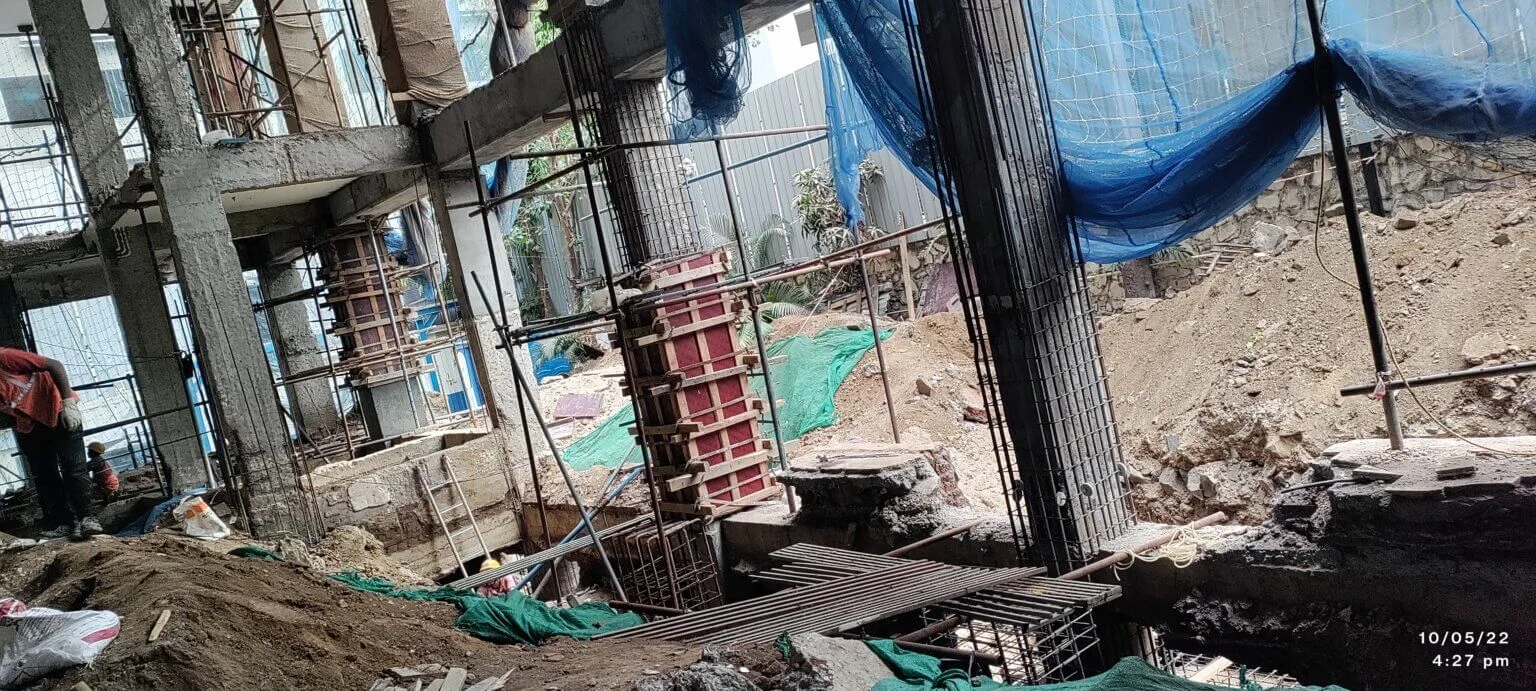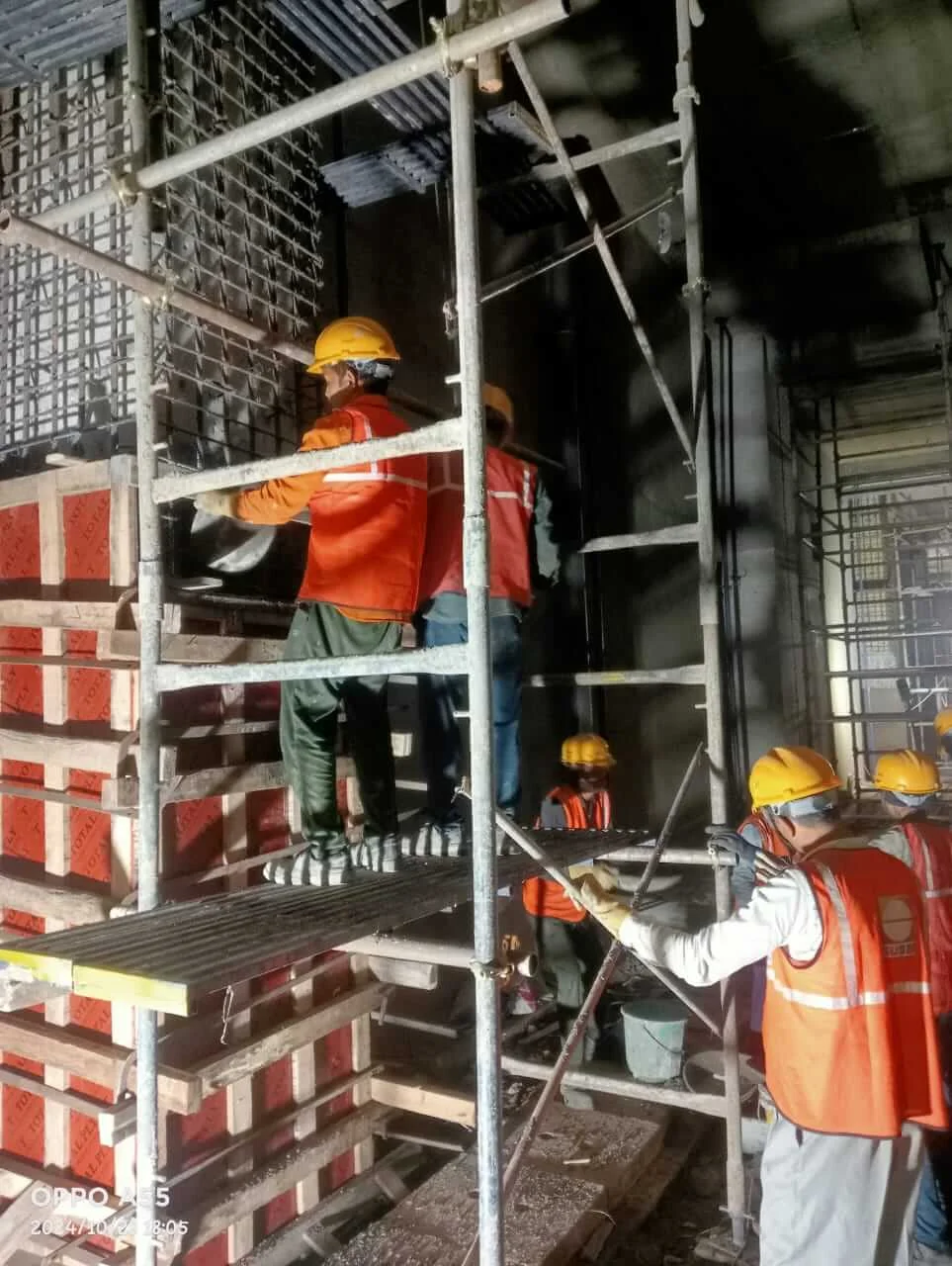12 Proven Benefits of Using Micro-Concrete Jacketing for Beams

Strong 8k brings an ultra-HD IPTV experience to your living room and your pocket.
In India, thousands of buildings, both old and new, face structural challenges. Beams are critical load-bearing components. When they weaken, the building's stability is compromised. Factors like corrosion, overloading, poor maintenance, or design flaws lead to this degradation. For many property owners, Micro-Concrete Jacketing is a reliable strengthening technique. It is widely accepted by engineers and builders for repairing reinforced concrete structures across residential, commercial, and industrial sectors in India.
1. Enhances Load-Bearing Capacity of Weakened Beams
Many historic structures in India were built using outdated codes. Today's demands often exceed the capacity of these buildings. Micro-concrete jacketing significantly enhances load-bearing strength. It creates a new layer around the original beam while maintaining usable space. This allows beams to securely support heavier weights. Engineers value this method because it repairs and improves structural performance, particularly in schools, residential societies, and hospitals that experience high daily traffic.
2. Ideal for Seismically Active Zones
India has several earthquake-prone regions, including Gujarat, Himachal Pradesh, and parts of Maharashtra. Beams in these areas need enhanced ductility. Micro-concrete jacketing makes beams more resilient against lateral stresses during tremors. It increases shear and flexural strength, providing essential earthquake resistance. This method allows buildings to meet new safety standards without requiring a complete structural overhaul. It has been demonstrated to enhance the earthquake resistance of buildings.
3. Cost-Effective for Large-Scale Repairs
When compared to beam replacement or steel bracing, Micro-Concrete Jacketing is more cost-effective. Building owners can avoid demolition while saving on materials and labour. The jacketing method uses readily available materials and does not require high-end equipment. Consequently, this strategy is suitable for government enterprises, schools, and housing societies with limited budgets. It also reduces downtime, making it a financially viable option for commercial properties.
4. Strengthens Beams Without Changing Dimensions
One major problem with beam retrofitting is the loss of usable space. Fortunately, Micro-Concrete Jacketing adds very little thickness to existing beams. This is particularly useful in commercial and residential structures where every inch matters. The ceiling height and visual look remain essentially unchanged. Indian homeowners love this option since it improves structural integrity without affecting the building's architecture or needing further interior renovations.
5. Improves Fire Resistance for Safer Structures
Fire safety is becoming a top priority in Indian real estate. Microconcrete jacketing creates a protective layer around existing beams. This layer functions as a thermal insulator, delaying the flow of heat. When paired with fire-rated coatings, it aids in the structural integrity of beams during a fire. This safety increase is critical for business buildings, schools, and hospitals.
6. Effective for Corroded or Damaged Beams
Beams exposed to moisture and pollution degrade rapidly, particularly in coastal or industrial areas. Micro-concrete jacketing can help remediate such damage. Before jacketing can begin, the existing concrete is cleaned and any rusty reinforcements are addressed. This procedure restores the beam's strength while safeguarding it from further exposure. It increases the structure's life expectancy and decreases long-term maintenance requirements. This approach is quite useful in Indian cities that suffer from pollution or humidity.
7. Faster Implementation with Minimal Disruption
Time is frequently a constraint in repair work. Micro-concrete jacketing enables rapid execution without displacing inhabitants. The materials are set quickly and do not require extended curing times. This makes the strategy ideal for busy schools, hospitals, and organizations that can't afford downtime. Residents will experience minimal disruption because it produces little dust or noise. Its convenience feature is a significant advantage in urban India.
8. Compatible With Existing RCC Structures
One of the most significant advantages of Micro-Concrete Jacketing is its exceptional compatibility. It bonds nicely to existing concrete and reinforcing steel. This ensures equal stress distribution and prevents cracking and separation. Builders do not have to be concerned about adhesion failure or mismatched material behaviour. This approach allows older Indian buildings to seamlessly integrate old and new construction components.
9. Durable and Long-Lasting Repairs
Longevity is an essential need in structural repairs. Micro-concrete jacketing is highly durable in a variety of situations. It can withstand wear, weathering, and mechanical tension. The rebuilt beams have been structurally sound for decades with minimal maintenance. This longevity makes it a reliable choice in India's diverse climates, which range from humid beaches to dry inland. It adds long-term value to structures while avoiding ongoing repair expenditures.
10. Supports Retrofitting in Space-Constrained Sites
Urban Indian constructions frequently confront space constraints. Large-scale retrofitting might be challenging due to access limitations. However, micro-concrete jacketing can be used in tight spaces without the need to dismantle nearby structures. Its adaptable installation procedure enables engineers to refit individual beams in constrained basements, hallways, or utility spaces. This makes it ideal for space-constrained situations such as railway stations and multi-story parking lots.
11. Reduces Structural Vibrations and Deflections
Beams that vibrate or flex excessively under load offer significant safety hazards. Micro-concrete jacketing strengthens such beams. It lowers deflection and improves the structure's stability. Vibrating floors are a common complaint among occupants of old buildings. This method not only improves safety but also provides greater comfort. It's especially useful in densely populated residential and commercial structures.12. Enhances Property Value and Regulatory Compliance
A structurally solid structure is worth more in the real estate market. Buyers and tenants want safety and dependability. Micro-concrete jacketing helps property owners increase structural safety and satisfy revised requirements. This improves the building's compliance score in audits. In India, where new safety rules are frequently enacted, such modifications shield owners from potential legal and insurance issues.
Note: IndiBlogHub features both user-submitted and editorial content. We do not verify third-party contributions. Read our Disclaimer and Privacy Policyfor details.



